Conjunctions Teaching Resources
Teach students how to use conjunctions to build better sentences this school year with the help of printable worksheets, digital activities and more teacher resources created for Australia teachers like you!
This collection is stocked with Australian English curriculum-aligned resources designed to help your students better understand how to combine sentences as they become more polished writers and tackle more complicated sentence structures. Teach what conjunctions are, how to use them and how to properly punctuate sentences with conjunctions in them!
New to teaching this part of the curriculum, or just looking for a conjunctions refresher? Read on for a primer from our teaching team, including a definition of conjunctions you can use to introduce your lesson, plus examples of the different types of conjunctions we use in English!
What Is a Conjunction? A Kid-Friendly Definition
Knowing the definition of this part of speech is only part of the battle. You'll also need to explain conjunctions to your students. Here's a kid-friendly definition from our teacher team:
Imagine you have two sentences that you want to connect. That's when a conjunction comes to the rescue. A conjunction is a special word that helps us join two sentences or ideas together when we're writing.
Types of Conjunctions and Examples of Each
There are three main types of conjunctions:
Coordinating Conjunctions
Coordinating conjunctions are the superheroes of the sentence world because they join two sentences of equal importance. The most common coordinating conjunctions are 'and,' 'but' and 'or.'
- And is like a friend for writers when we use this conjunction in a sentence. It helps us add more things together when we're writing. For example: 'I like pizza, and I like ice cream.'
- 'But' is like a stop sign because it shows a contrast between two things. For example: 'I wanted to go to the park, but I had homework to do.'
- 'Or' is a conjunction that gives you options. For example: 'Do you want a red up or a blue cup?'
Subordinating Conjunctions
Subordinating conjunctions connect a main sentence with a less important one. They show a relationship of time, cause and effect or condition. Some examples are 'because,' 'when' and 'if.'
- 'Because" explains why something happens. For example: "I couldn't go outside because I didn't finish my homework."
- 'When' tells you the time something happened or will happen. For example: 'I will do my homework when I get home.'
- 'If' shows a condition or possibility. For example: 'If it rains, we will play in the classroom at recess.'
Correlative Conjunctions
Correlative conjunctions are a bit like a pair of shoes because they always come in pairs and work together. Some examples are 'either...or,' 'neither...nor' and 'both...and.'
- 'Either...or' gives you a choice between two things. For example: "You can either have cake or ice cream."
- 'Neither...nor' means not one thing and not another thing. For example: 'Neither the dog nor the cat is allowed at school.'
- 'Both...and' means having two things together. For example: 'She is both smart and nice.'
- Plus Plan
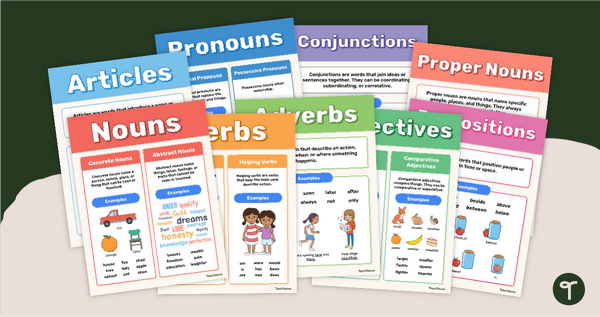
Nouns, Proper Nouns, Verbs, Adjectives, Adverbs and Conjunctions Posters
Enhance student understanding of the 8 parts of speech with these colourful, informative and easily-referenced grammar wall posters.
- Plus Plan

Subordinating Conjunctions Worksheet
Use this worksheet to enable students to practise identifying and constructing sentences using subordinating conjunctions.
- Plus Plan

Conjunctions Spinners (Coordinating Conjunctions, Subordinating Conjunctions, Correlative Conjunctions)
Bring some fun to your grammar lessons with these colourful conjunctions spinners! Students spin tp reveal a conjunction to use in their writing or oral language.
- Plus Plan
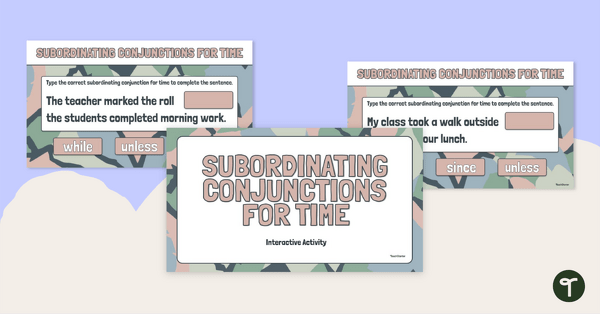
Subordinating Conjunctions (for Time) Interactive Activity
Assign this multiple choice subordinating conjunctions for time interactive activity for your students to correctly identify this type of conjunction in given sentences.
- Plus Plan
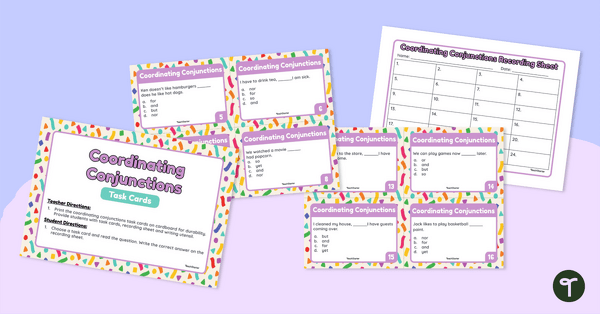
Coordinating Conjunctions Task Cards
Use this set of 24 task cards to reinforce students' understanding of coordinating conjunctions and building compound sentences.
- Plus Plan
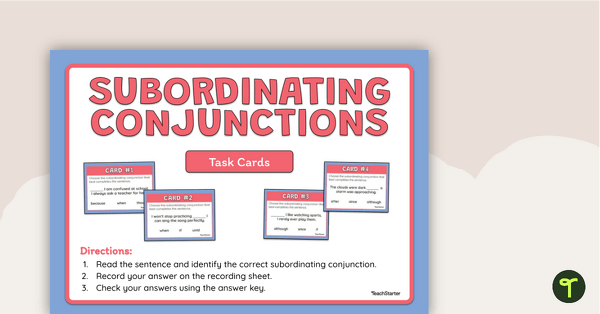
Subordinating Conjunctions Task Cards
Use this set of 24 task cards to help students practise identifying and constructing sentences using subordinating conjunctions.
- Plus Plan
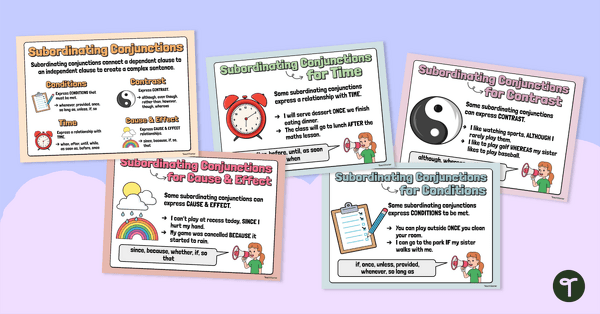
Subordinating Conjunctions Posters
Display this colourful and informative subordinating conjunctions poster set to remind your students of the functions and types of subordinating conjunctions!
- Plus Plan
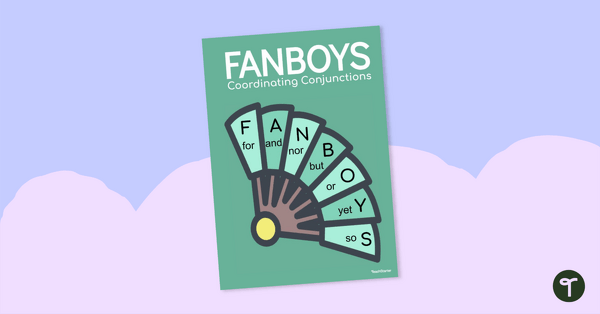
FANBOYS Poster for Teaching Coordinating Conjunctions
Display this FANBOYS poster in your classroom to help students choose appropriate coordinating conjunctions.
- Plus Plan
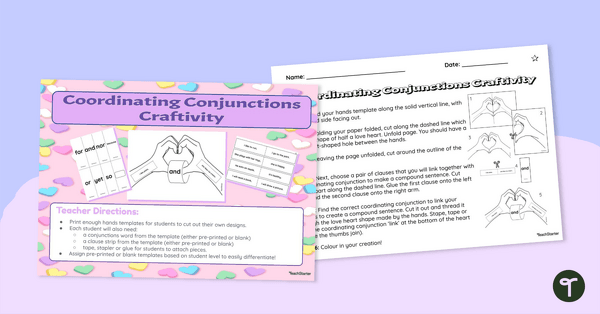
Coordinating Conjunctions Craft and Writing Activity
Encourage your students to get hands-on with this highly visual representation of coordinating conjunctions and the role they play in linking two ideas in a sentence.
- Plus Plan
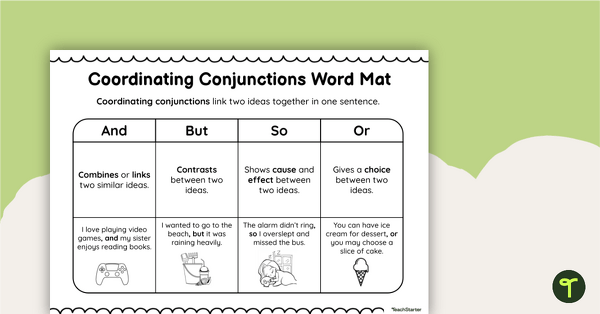
Coordinating Conjunction Word Mat
Boost your students’ writing skills by giving them access to this coordinating conjunctions word mat during literacy lessons.
- Plus Plan
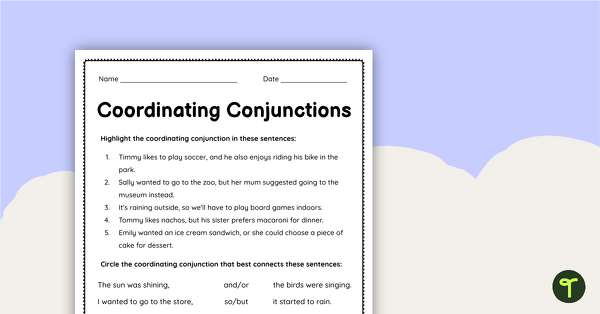
Coordinating Conjunctions Worksheet
Distribute this coordinating conjunctions worksheet to help your students practise joining clauses with conjunctions to form compound sentences.
- Plus Plan

Subordinating Conjunctions (Cause and Effect) Interactive Activity
Use this interactive digital activity to help students identify cause and effect subordinating conjunctions, and construct sentences using this part of speech.
- Plus Plan
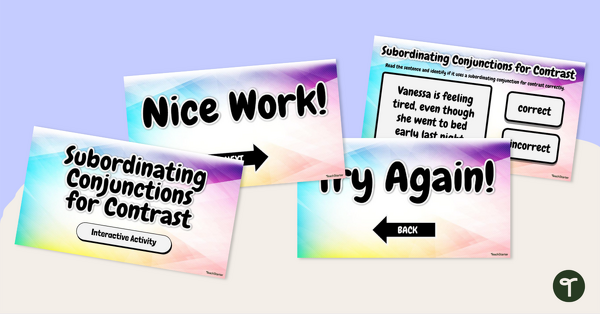
Subordinating Conjunctions for Contrast Interactive Activity
Assign this multiple choice subordinating conjunctions for contrast interactive activity for your students to correctly identify this type of conjunction in given sentences.
- Plus Plan
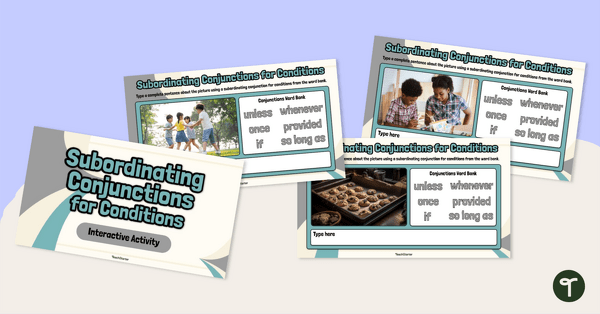
Subordinating Conjunctions (for Conditions) Interactive Activity
Use this interactive digital activity to help students identify conditional subordinating conjunctions, and construct sentences using this part of speech.
- Plus Plan

Subordinating Conjunctions Game Show Interactive Activity
Use this interactive digital activity to assist your students in practising identifying and constructing sentences using subordinating conjunctions in a fun way!
- Plus Plan
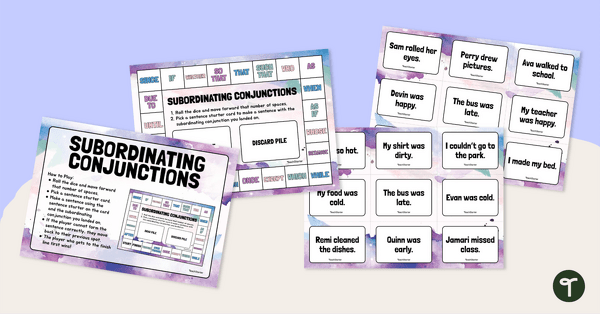
Subordinating Conjunctions Board Game
Use this set of 24 task cards to help students practise identifying and constructing sentences using subordinating conjunctions.
- Plus Plan
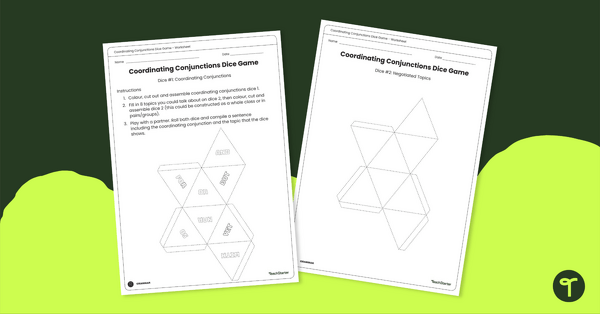
Coordinating Conjunctions Dice Game
Use this hands on activity for students to create two 8 sided-dice and write compound sentences using coordinating conjunctions.
- Plus Plan
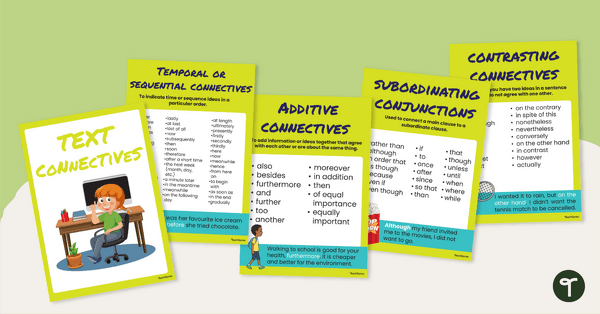
Text Connectives Posters for Upper Primary Students
Display this set of 8 grammar posters to remind students the types and examples of sentence connectives and conjunctions.
- Plus Plan

Text Connectives Posters for Lower Primary Students
Display this set of 8 grammar posters to teach students about text connectives and conjunctions.
- Plus Plan
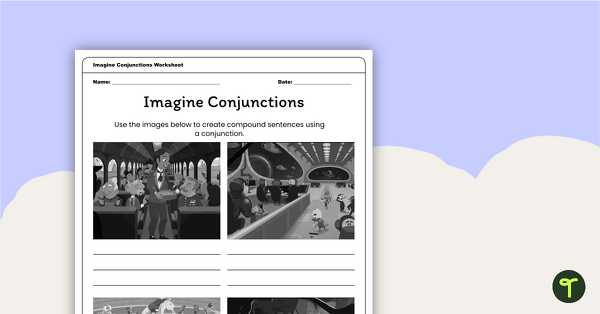
Imagine Conjunctions Worksheet
Spark students' creativity with this conjunctions worksheet containing four images to prompt students to write compound sentences.
- Plus Plan
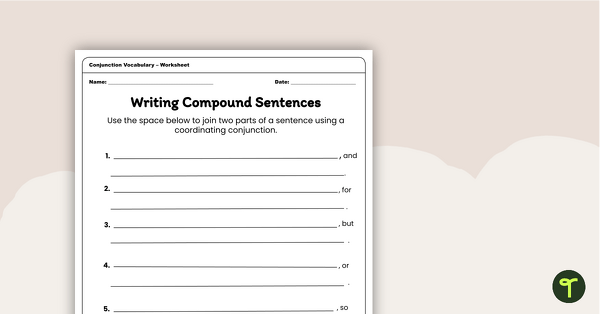
Writing Compound Sentences with Conjunctions Worksheet
Assign this worksheet to allow students to practise using coordinating conjunctions to create compound sentences.